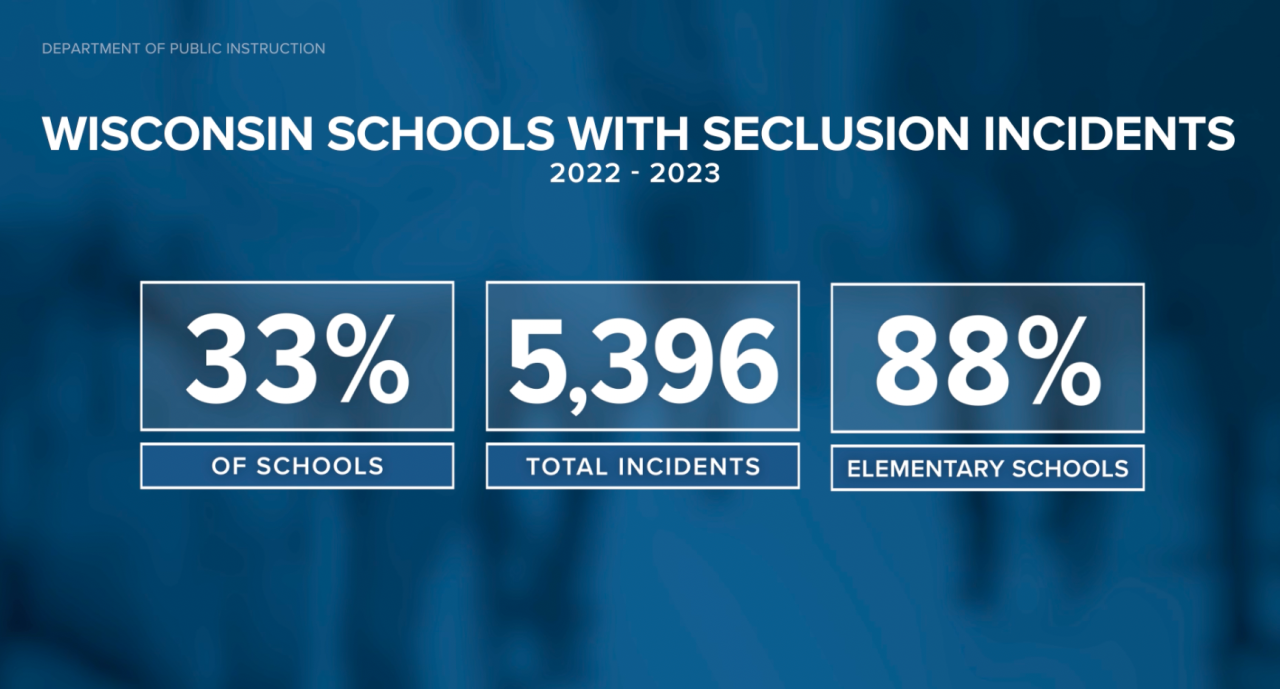HARTLAND — A parent named Laura Fox reached out to TMJ4 because she’s upset the Hartland Lakeside School District is installing what are called "seclusion rooms."
TMJ4’s Lighthouse team is investigating what some consider a controversial practice in Wisconsin schools.
“I know what a child feels like inside one of those rooms,” said Fox. “They’re terrified. They’re terrified.”
State law says seclusion and restraint incidents are supposed to be a last resort when a student poses an imminent risk of physical harm to themselves or others in the classroom.
Disability rights advocates think seclusion rooms shouldn’t be allowed in schools. A former teacher disagrees.
Seclusion rooms, which often look like this, are the last thing Fox wanted to see built in her children’s schools.

“It’s a real room,” she said. “It’s 7-by-7 feet with a door with padded walls, no ceiling, so everyone can hear that kid scream and cry and beg to be let out,” Fox said.
When Fox learned that the Hartland Lakeside School District was constructing them, she contacted TMJ4 because she said district leaders refused to listen to her concerns.
“It’s inhumane,” she said. “I can tell you I’ve encountered children being put in these rooms, and I’ve seen firsthand the type of trauma that it can cause."
Watch: Should schools stop building "seclusion rooms"?
The Hartland Lakeside School District declined our interview request and wouldn’t show us the rooms. Superintendent Tina Vogelmann emailed TMJ4 a statement that said, "The district’s seclusion rooms are designed to comply with state law."
“We’ve had students tell us it feels like being in jail,” said Joanne Juhnke.
Juhnke advocates for changes to state laws on several occasions.
“Disability Rights Wisconsin would like to see seclusion disappear altogether,” she said.
Juhnke is with Disability Rights Wisconsin, an organization that pushed the legislature to limit seclusion and restraint in schools—and to increase transparency when it happens.
Those laws require there to be an imminent threat to the safety of students, no locks on doors, and mandatory reporting of each seclusion incident to parents, the school board, and the state.
Data from last school year shows there were eight seclusion incidents in the Hartland Lakeside School District. All of them involved students with disabilities.

“I wish I could say it was a surprise,” Juhnke said. “It’s a sad commentary on what happens.”
The latest statewide data available from the Department of Public Instruction shows one in three schools had at least one seclusion incident during the 2022-2023 school year. It totals about 5,400 incidents. Eighty-eight percent took place in elementary schools.

“I think this is something that if you don’t encounter it directly, you might not understand that we’ve got a whole lot of elementary school students with disabilities being physically overpowered in the school,” Juhnke said. “Oftentimes, both physically overpowered and then taken to, physically removed to a small room where an adult holds the door on them.”
“What alternative would you suggest instead of using these seclusion rooms?” TMJ4 reporter Ben Jordan asked.
“The one alternative that is the easiest to contemplate is removing the other people from the situation who might have been harmed, so the other students,” Juhnke said.
Eric Brooks is a former special needs educator and a current school board member in Waukesha.
“I’ve been in situations where students are getting physically violent or aggressive,” he said. “They’re having extreme verbal outbursts. I’ve had situations where I’ve had chairs thrown in my direction or desks tipped over. Obviously, you can’t learn.”
Brooks says seclusion is always a last resort, but something he feels is a necessary option.
“That student can’t learn in that environment, but neither can the rest of the class, and it’s not fair to all the other students to have their learning disrupted by one individual. But it’s also not fair to the dignity of that child to have this really vulnerable moment be exposed to their classmates,” he said.
Not only is Fox calling on the district to halt construction of the seclusion rooms, she worries most parents don’t even know it’s happening.
“They’ve gotten along just fine without them, and I want them not to be built because if they’re built, they will be used,” she said. “It’s traumatic, very traumatic to kids.”
It’s about time to watch on your time. Stream local news and weather 24/7 by searching for “TMJ4” on your device.
Available for download on Roku, Apple TV, Amazon Fire TV, and more.







